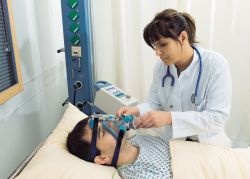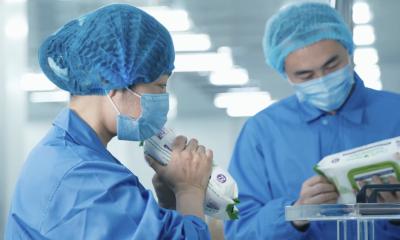Non-invasive applications in clinics
If a patient is delivered to the clinic with pulmonary complications, the clinic has to decide which type of therapy is suitable. In addition to purely medical aspects other criteria also play an important role such as: the mental and physical stress on the patient due to the treatment, the time it takes to implement a measure and the overall economics of the procedure.

Non-invasive respiration is a form of therapy that is usually not only more pleasant for the patient but also reduces the risk of infection, and is therefore more economic. It is gradually being recognised that non-invasive respiration should be used wherever possible in day-to-day clinical use. This view is now also reflected in medical guidelines.1
The reason for this recommendation is that invasive respiration is accompanied by the risk of ventilator-associated pneumonia (VAP) - one of the most frequently occurring hospital-acquired infections in the US and in Europe.2 These complications not only impact on patients but also on the budget: infections acquired in US hospitals cost $29 million per year.3
Non-invasive applications in other areas
Non-invasive measures are generally becoming the focus of attention for preventing hospital-acquired infections. This is because each intervention, e.g. with needles or catheters, opens up a primary entrance point for infections. Furthermore, in a situation that is already stressful for patients, invasive procedures usually cause pain and anxiety. The same can be true for diagnostics and monitoring. However, whereas producing EKGs and monitoring oxygen saturation (SpO2 levels) and expiratory CO2 levels have been monitored non-invasively for a long time, it is now possible to continuously monitor arterial blood pressure as well.
Dräger offers comprehensive solutions both for non-invasive respiration and monitoring. For example, the Carina respiration apparatus, in particular, fulfils the requirements for non-invasive respiration, but virtually all other Dräger respiration devices offer this option. The NovaStar face mask can be individually adapted to the patient’s facial contours and gel cushion ensures a tight fit, thereby minimizing leakage and skin lesions. Dräger’s Infinity CNAP SmartPod offers a method of measuring arterial blood pressure via a sensor sleeve that is placed over the patient’s finger. The Infinity etCO2 pod can be connected to the respiration tube system and measures the CO2 content of the exhaled air in the main and subsidiary flow.
21.11.2008





